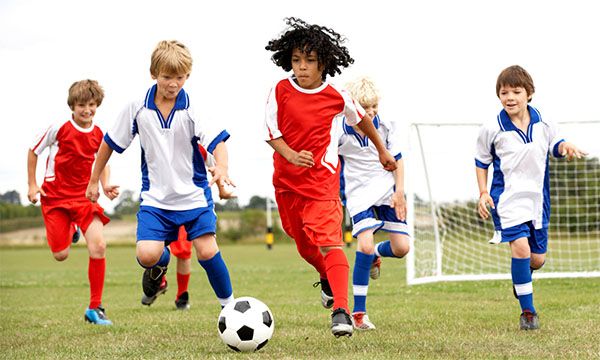Combating Concussions In Youth Sports

Children who belong to a sports team thrive physically, mentally, emotionally, and socially. They get exercise, gain confidence in their abilities, learn to work with others, and develop leadership skills. However, there are also negative side effects in youth sports — namely, head injuries.
Scientific research has shown that sports-related concussions among children ages 5 to 21 are not necessarily being prevented by helmets or other protective gear. But that doesn’t mean you eliminate the helmets, face masks, or mouth guards — they can and do reduce the risk of skull fractures and injuries to the eyes, face, and mouth. You also don’t want to forbid your child to join a sports team because you’re worried about the injuries they may or may not get. However, having concerns about concussions is an understandable fear.
Responding To Youth Concussions
A report from The National Academies of Sciences, Engineering, and Medicine found that the key to aiding children with head injuries is vigilance. The most important thing parents and coaches can do, should a head injury occur, is know how to recognize and respond to a concussion.
You need to win the fight to take your child to a neurologist or traumatic brain injury specialist (because, yes, even the most minor concussion is still a traumatic brain injury). You need to make sure they comply with any treatment plans, including physical and mental rest for the indicated amount of time and staying off the field until they’ve been completely cleared by their doctors.
If your child has received a concussion in the past, studies have shown that their risk of concussion is higher. And playing a sport before the brain has fully healed places your child at an increased risk for more serious consequences if a second brain injury occurs. Football, ice hockey, wrestling, lacrosse, and soccer have the highest rates of reported concussions for male athletes in high school and college in the United States. For women, soccer, lacrosse, and basketball are the most hazardous sports.
The Benefits Of Youth
The long-term effects of a traumatic brain injury on developing brains is relatively unknown, but children and teenagers do have one thing working in their favor — their youth. Studies have shown that the neuroplasticity of a young brain — the ability to form new connections to compensate for those that are blocked or severed — can help heal injured areas of the brain and even give parts of the brain new jobs to do.
A young person’s social and emotional support systems are also important to the plasticity process and mental and social engagement can help stimulate cells that are reaching out and forming new synapses and connections. Put your child’s brain health ahead of their sporting career. Pay attention to any traumatic brain injury symptoms so you can keep your child healthy, moving, and enjoying their young lives, whether that involves sports or not.




